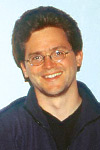 |
 |
|||||||||||||
|
|||||||||||||
|
|||||||||||||
A new team of young researchers based at DESY will start building more bridges between theory and experiment and between LHC and ILC in May (next year). Philip Bechtle, currently a post-doc at the BaBar experiment at SLAC, has just received approval and a budget for his "Young Investigators Group" from the Helmholtz Association, the largest scientific organisation in Germany spanning 15 research centres, including DESY. Bechtle, one post doc and four PhD students will delve deep into the subject "Terascale Physics: From Data Taking at LHC to Understanding at ILC." Bechtles research group counts on the fact that the next generation of particle accelerators that will take up duty within the next couple of years will deliver fundamentally new insights into the world of particles – including supersymmetry (SUSY), the Higgs and all that. "We have interesting theories of what lies beyond the Standard Model, but in order to really understand that we need good and precise data spanning a wide range of energies and observables," explains Bechtle. "Judging from our present understanding of the data we have, the LHC will discover new particles. Whether it's going to be a Standard Model Higgs boson or something else, we don't know. But at the LHC we won't be able to study the new particles in detail, analyse their mass very precisely or their couplings, and hence the precise identification of the underlying theory of the new physics will be difficult – that's why the linear collider is so crucial." The "young investigators" will cross boundaries and link fields in different ways. At the LHC's ATLAS experiment they will help build the high-lever trigger. The analysis efforts at ATLAS will concentrate on the reconstruction of tau leptons. Since they decay in narrow jets, which are easily faked by QCD effects in dense hadronic environments such at the LHC, they are more difficult to reconstruct than the lighter lepton species. "The current state of knowledge concerning SUSY and the Higgs only allows us to make rough estimations at where to find them. Among these estimates, it's an educated guess that tau decays could be very important to reconstruct SUSY events and to identify the new physics as coming from SUSY, and we want to make sure we are ready for this possibility" says Bechtle. "The ultimate goal of the ILC, on the other hand, is not so much to discover new particles, but to give us the precision information we need to understand the new physics", explains Bechtle. "Now we're in a phase where many key design decisions are made, and we want to make sure that we have precise simulations of physics measurements readily at hand which we can use to make sure the design allows for optimal measurements for a wide variety of processes with the least systematic uncertainties." The group will also use the close connection to the analyses at LHC to feed in the latest possible information about possible new physics. Finally, the group will work on studies how the results from LHC, the ILC and other measurements can be most optimally combined to understand new physics scenarios such as SUSY. The group is funded with 290 000 Euros per year, with 125000 coming from Helmhotz and the rest shared between DESY and the universities of Hamburg and Bonn. It fits neatly into the growing structure of young researchers groups at DESY, including an ATLAS group and two ILC-related groups on polarisation and HCal R&D. The running time is five years, and the best of this year's selection of 19 Helmholtz "Young Investigators Groups" will be offered a tenure position. -- Barbara Warmbein |
|||||||||||||
| © International Linear Collider |
